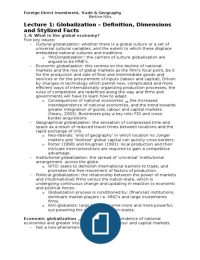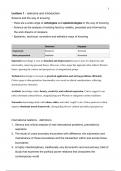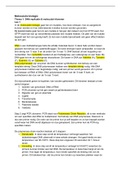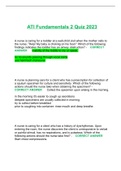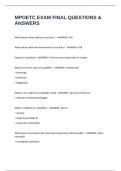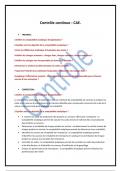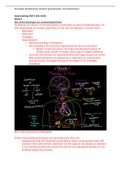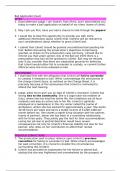i) Multicultural education-
Multicultural education encourages and accepts cultural diversity. It preserves
cultures, mutual interaction and cooperation. Cultural differences are seen as
beneficial and all cultural groups’ rights are respected. Thus, women rights, those
with disabilities and special needs are catered for in the education system.
For example, a school that caters for all learners and does not exclude learners with
learning barriers or physical disabilities. Learners with disabilities are placed in the
same class as other learners and their needs are seen to.
ii) Prejudice-
Prejudice is the positive or negative judgment or opinion which an individual has for
another person or thing without having the correct facts. Prejudice is related to how
people feel about one another before understanding or having the correct
information. For example, thinking that another culture is inferior to yours because
you do not have knowledge or information about the uniqueness and complexities of
their culture and traditions.
iii) Assimilation-
Assimilation is the approach which encourages people to have the same culture in
society and reducing cultural differences. It is adapting the minority group’s culture
to fit within the culture of the dominant group. It means the social and cultural context
of the school is based on the dominant group’s culture. It does not cater for cultural
differences. For example, during Apartheid, South Africa’s education system was
built on the structures of the Apartheid culture and what they wanted the minority
groups to learn as the educational policies were ethnocentric. It did not cater for the
diverse cultures of South Africa.
c) How a teacher could promote prejudice reduction in multicultural education.
Learners should not be separated from one another due to any classification, for
example girl or boy when doing activities. All learners should be given the same
treatment and rights as the other.
A teacher could reduce prejudice by educating learners about diverse cultures,
traditions and languages in South Africa. This can be done by sharing story books,
music and learning materials which include all different types of ethnic, cultural and
language groups. Teachers can host heritage day celebrations whereby learners can
share their cultural food, clothes and days of celebrations.
Question 2.
, a) I disagree with the statement that South Africa does not need multicultural
education because due to Apartheid and the Bantu Education before 1994,
South Africa was forced into assimilation and the minority groups such as
blacks, coloureds and Indians received a sub-standard quality of education.
Thus, in order to recover and fulfil individual learner’s needs based on their
holistic development, all cultures need to be accepted, acknowledge and
promoted in the education system.
Furthermore, South Africa needs a social transformation in which every
culture is acknowledged and every language is encouraged. Everyone in
South Africa should have the same rights and learners should be provided
with the same quality of education. Schools are seen as a medium in which
learners can be provided with the same opportunities and create an equal
society. Therefore, due to the different cultures in South Africa, it is necessary
for all schools to accommodate diverse cultures in order for teachers to
understand and adapt their teaching strategies to accommodate all learners.
.b.
i) Language
The language used at the school as the medium is crucial for teaching because a
teacher needs to have an excellent understanding and command of the language
and pronunciation. Teachers have to be able to teach the subject content in a way
which the learners can understand. The language used by learners at home can also
make teaching difficult as learners may have problems pronouncing words correctly
or reading learning material required to understanding the lesson, as well as
answering tests and formal assessments.
For example, the school’s language medium may be English but the learners have
diverse language backgrounds and therefore cannot understand all concepts equally
or thoroughly. They may have difficulties answering questions in tests and
assessments because they do not understand the vocabulary used in the questions.
Speaking different languages may also make it hard for the learner and teacher to
understand each other ((Lemmer, Meier and Van Wyk, 2012, p. 27).
ii) Family structure
Some learners come from single-parent homes or homes which do not have provide
the learner with any academic and emotional support. Thus, when teaching, a
teacher needs to consider the type of family structure the learner comes from and
provide support according to the learner’s social needs. Some learners may face
abuse at home and this will affect how they interact with the teacher and other
learners. It will also affect how they concentrate and work in class. Thus, teachers
should have information about learner’s family structure in order to provide additional
support.
Multicultural education encourages and accepts cultural diversity. It preserves
cultures, mutual interaction and cooperation. Cultural differences are seen as
beneficial and all cultural groups’ rights are respected. Thus, women rights, those
with disabilities and special needs are catered for in the education system.
For example, a school that caters for all learners and does not exclude learners with
learning barriers or physical disabilities. Learners with disabilities are placed in the
same class as other learners and their needs are seen to.
ii) Prejudice-
Prejudice is the positive or negative judgment or opinion which an individual has for
another person or thing without having the correct facts. Prejudice is related to how
people feel about one another before understanding or having the correct
information. For example, thinking that another culture is inferior to yours because
you do not have knowledge or information about the uniqueness and complexities of
their culture and traditions.
iii) Assimilation-
Assimilation is the approach which encourages people to have the same culture in
society and reducing cultural differences. It is adapting the minority group’s culture
to fit within the culture of the dominant group. It means the social and cultural context
of the school is based on the dominant group’s culture. It does not cater for cultural
differences. For example, during Apartheid, South Africa’s education system was
built on the structures of the Apartheid culture and what they wanted the minority
groups to learn as the educational policies were ethnocentric. It did not cater for the
diverse cultures of South Africa.
c) How a teacher could promote prejudice reduction in multicultural education.
Learners should not be separated from one another due to any classification, for
example girl or boy when doing activities. All learners should be given the same
treatment and rights as the other.
A teacher could reduce prejudice by educating learners about diverse cultures,
traditions and languages in South Africa. This can be done by sharing story books,
music and learning materials which include all different types of ethnic, cultural and
language groups. Teachers can host heritage day celebrations whereby learners can
share their cultural food, clothes and days of celebrations.
Question 2.
, a) I disagree with the statement that South Africa does not need multicultural
education because due to Apartheid and the Bantu Education before 1994,
South Africa was forced into assimilation and the minority groups such as
blacks, coloureds and Indians received a sub-standard quality of education.
Thus, in order to recover and fulfil individual learner’s needs based on their
holistic development, all cultures need to be accepted, acknowledge and
promoted in the education system.
Furthermore, South Africa needs a social transformation in which every
culture is acknowledged and every language is encouraged. Everyone in
South Africa should have the same rights and learners should be provided
with the same quality of education. Schools are seen as a medium in which
learners can be provided with the same opportunities and create an equal
society. Therefore, due to the different cultures in South Africa, it is necessary
for all schools to accommodate diverse cultures in order for teachers to
understand and adapt their teaching strategies to accommodate all learners.
.b.
i) Language
The language used at the school as the medium is crucial for teaching because a
teacher needs to have an excellent understanding and command of the language
and pronunciation. Teachers have to be able to teach the subject content in a way
which the learners can understand. The language used by learners at home can also
make teaching difficult as learners may have problems pronouncing words correctly
or reading learning material required to understanding the lesson, as well as
answering tests and formal assessments.
For example, the school’s language medium may be English but the learners have
diverse language backgrounds and therefore cannot understand all concepts equally
or thoroughly. They may have difficulties answering questions in tests and
assessments because they do not understand the vocabulary used in the questions.
Speaking different languages may also make it hard for the learner and teacher to
understand each other ((Lemmer, Meier and Van Wyk, 2012, p. 27).
ii) Family structure
Some learners come from single-parent homes or homes which do not have provide
the learner with any academic and emotional support. Thus, when teaching, a
teacher needs to consider the type of family structure the learner comes from and
provide support according to the learner’s social needs. Some learners may face
abuse at home and this will affect how they interact with the teacher and other
learners. It will also affect how they concentrate and work in class. Thus, teachers
should have information about learner’s family structure in order to provide additional
support.


